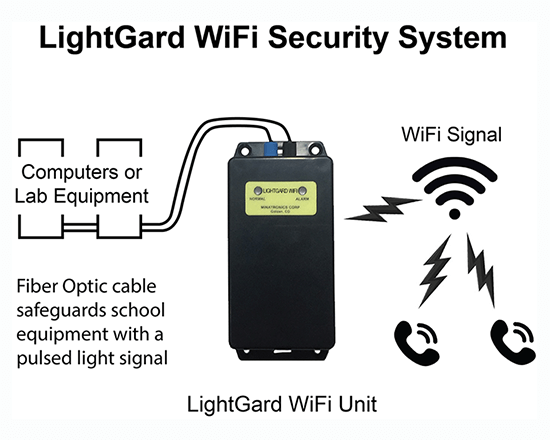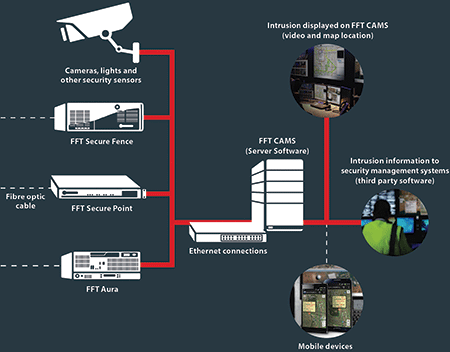Fiber Optic Security System: The Ultimate Solution for Your Property’s Protection Needs
Fiber Optic Security System: The Ultimate Solution for Your Property’s Protection Needs
Blog Article
Why Fiber Optic Safety And Security Solutions Are the Future of Security
The shift to fiber optic protection systems notes a substantial innovation in the realm of security, driven by their outstanding information transmission capacities and strength to exterior interferences. These systems not only help with faster and extra trustworthy interaction yet also offer a cost-effective solution with lowered upkeep requirements. As the landscape of protection develops alongside arising innovations such as AI and IoT, the capacity for optical fiber to improve and redefine security frameworks becomes significantly noticeable. The implications of these improvements increase essential concerns concerning the future of safety actions and their performance in an ever-changing atmosphere.
Advantages of Fiber Optic Equipments
Among the key advantages of fiber optic systems is their superior bandwidth ability, which promotes the transmission of large volumes of data over cross countries without considerable loss. This characteristic is particularly valuable for safety and security applications that call for the continual monitoring and transfer of high-def video clip feeds, sensor data, and various other critical info. Fiber optics can fit the growing demands of modern safety and security systems, ensuring that information remains undamaged and reliable.
Additionally, fiber optic wires are much less susceptible to electromagnetic disturbance, which can be a considerable problem in environments with different electronic tools. This resistance improves the honesty of the data being transmitted, therefore decreasing the threat of information breaches or system failures. Moreover, fiber optic systems are inherently much more safe than standard copper cords, as taking advantage of a fiber optic line without discovery is exceedingly difficult.
The resilience of fiber optic wires additionally adds to their appeal. They are immune to environmental variables such as wetness and temperature changes, lowering maintenance prices and boosting system long life. Generally, these benefits placement fiber optic systems as a durable and effective option for modern-day protection frameworks, ensuring reputable and secure information transmission.
Enhanced Data Transmission Rate

The ability to transfer vast quantities of data rapidly helps with the seamless combination of high-definition video feeds and advanced analytics. Safety and security systems can now refine and analyze information in real-time, enhancing reaction times and situational understanding. Furthermore, fiber optic links support longer transmission distances without deterioration of signal high quality, making them suitable for extensive protection networks.
The enhanced rate of fiber optic systems not just improves the effectiveness of security procedures yet additionally reduces latency. This is especially crucial in essential situations where timely decision-making can avoid protection breaches or alleviate prospective risks. As companies remain to prioritize safety and security Source and efficiency, the need for quick and trusted information transmission will undoubtedly solidify fiber optic systems as a foundation of contemporary safety and security framework.
Resistance to Interference
Fiber optic security systems continually show extraordinary resistance to electromagnetic disturbance, a critical advantage in environments vulnerable to digital sound. Unlike conventional copper cables, which can be negatively impacted by electromagnetic areas, superhigh frequency disturbance, and other forms of electric disruption, fiber optic cords utilize light to transfer data. This intrinsic residential property makes certain that the signals stay clear and unaltered, despite bordering electronic activity.
The use of glass or plastic fibers in fiber optic modern technology creates a barrier against interference, permitting trustworthy information transmission even in difficult situations such as industrial centers, urban areas with high digital traffic, or places near radio towers. This particular considerably lowers the likelihood of signal destruction or loss, making fiber optic systems particularly suitable for safety applications where honesty and accuracy of information are critical.
In addition, this resistance to interference enhances the general performance and dependability of safety and security systems, making sure that monitoring and alert systems work effortlessly. In a world where security is progressively intimidated by sophisticated modern technologies, the resilience of fiber optic systems stands out as a pivotal feature, strengthening their condition as a vital part of modern-day safety and security infrastructure.
Cost-Effectiveness Over Time
Significant price savings can be accomplished with time with the execution of fiber optic safety and security systems. While the preliminary investment might appear greater compared to typical copper-based systems, the lasting economic advantages emerge with lowered operational and maintenance costs (fiber security). Fiber optic cords are inherently extra durable and much less vulnerable to environmental elements, which converts to reduce substitute and repair work costs over their lifespan
Moreover, fiber optic systems need much less power to operate, which additionally decreases power costs. Boosted information transmission capacities enable less repeaters and amplifiers, decreasing equipment financial investment and enhancing setup procedures. The scalability of these systems also adds to cost-effectiveness, as organizations can broaden their security facilities without incurring considerable added expenses.
Another variable to consider is the raised performance in site web monitoring and action abilities that fiber optics give. Enhanced real-time data transmission can lead to quicker occurrence feedback times, possibly mitigating losses and responsibilities connected with protection breaches. In amount, the long-term benefits of fiber optic security systems not only validate the initial expenditure however additionally place them as a monetarily prudent choice for companies looking find more info for durable protection remedies.

Future Developments in Protection
Progressing innovations are readied to revolutionize security systems, incorporating artificial knowledge (AI) and artificial intelligence to enhance danger detection and action capacities. These advancements will enable safety systems to analyze huge quantities of data in real-time, identifying patterns and abnormalities that suggest possible hazards. This proactive approach will enable much faster decision-making and a lot more reliable occurrence actions.
In addition, the unification of the Internet of Points (IoT) is leading the means for interconnected safety devices, supplying thorough security and monitoring. Smart sensors can pass on details about environmental adjustments, while automated notifies can alert protection employees instantly of dubious tasks.
In addition, the development of biometric modern technologies will certainly further reinforce safety mechanisms. Face recognition, fingerprint scanning, and retina identification are coming to be a lot more advanced, supplying layers of verification that are hard to bypass.
Final Thought
Finally, fiber optic security systems stand for a considerable development in security technology, offering unparalleled information transmission speed, resistance to electromagnetic disturbance, and long-term cost-effectiveness. As the need for sophisticated security services continues to grow, the assimilation of optical fiber with emerging innovations such as AI, IoT, and biometrics will certainly additionally boost security frameworks (fiber security). The mix of these innovations will certainly guarantee an extra secure and receptive setting, strengthening optical fiber as a cornerstone of future protection systems
Report this page